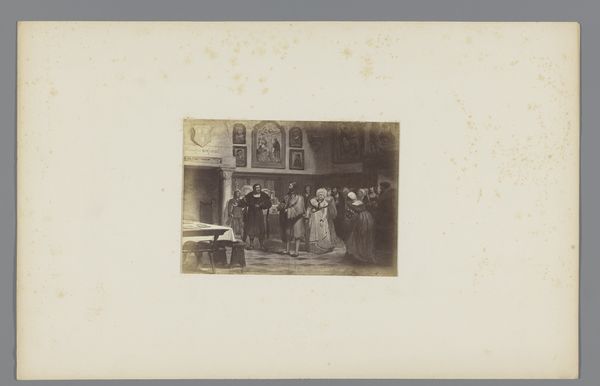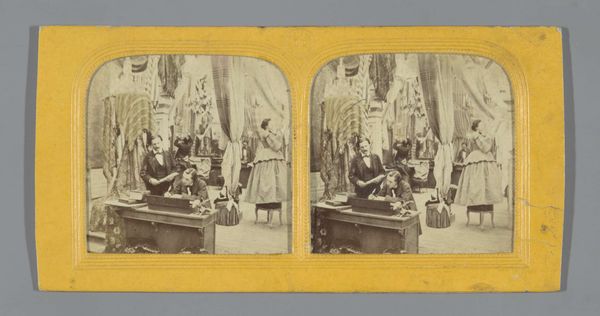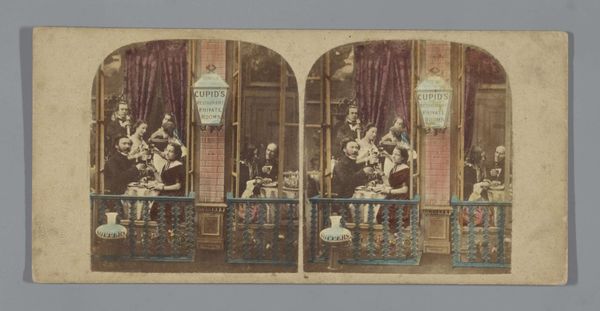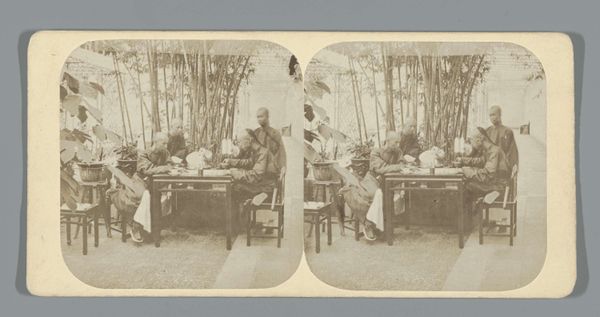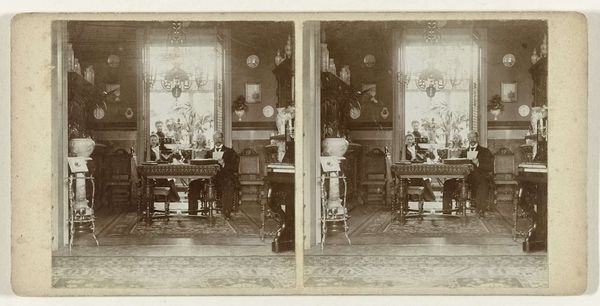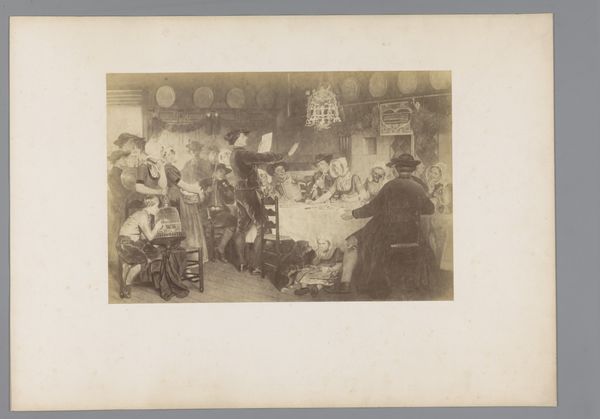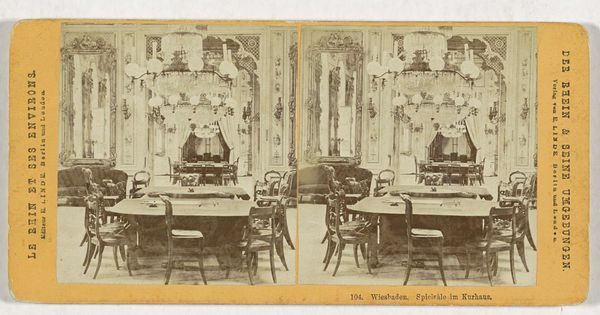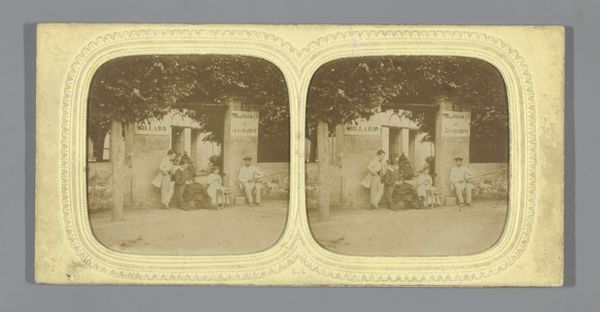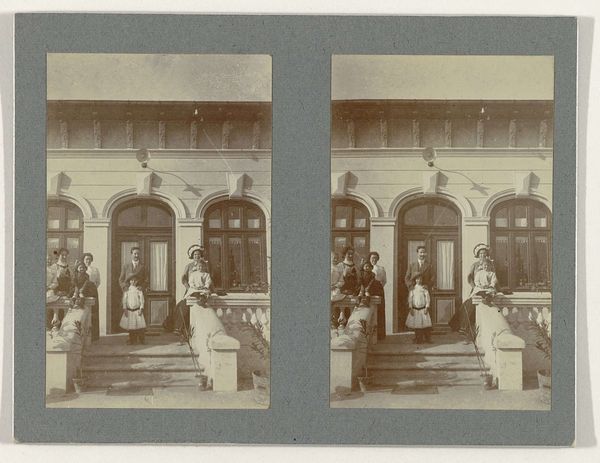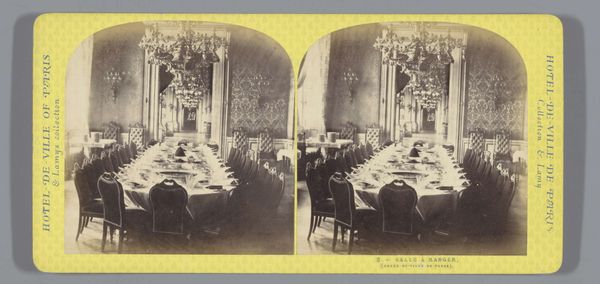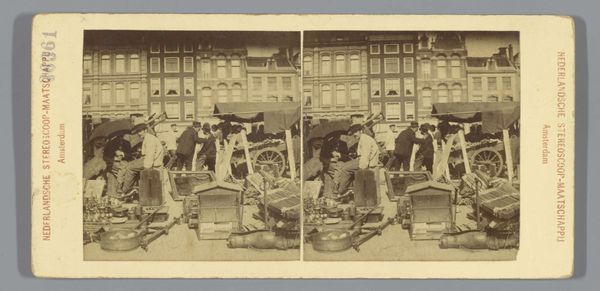
photography
#
dutch-golden-age
#
street-photography
#
photography
#
coloured pencil
#
cityscape
#
genre-painting
#
realism
Dimensions: height 88 mm, width 180 mm
Copyright: Rijks Museum: Open Domain
Curator: Looking at this interesting piece titled "Street view with market stall, Netherlands, probably Amsterdam," captured between 1892 and 1902 by Sigmund L\u00f6w, I'm struck by the slice of daily life it presents. What are your initial thoughts? Editor: My immediate reaction is about the muted tonal range; the grays and browns give it a documentary feel, even a sense of austerity. The composition centers on these market stalls creating a rhythmic pattern, but it's the light itself that interests me, softly defining form without drama. Curator: The lack of drama feels deliberate. Considering the rise of photography and its role in documenting social realities during this period, one might argue that it's less about aesthetic grandstanding and more about faithfully recording the urban experience and the working class in Amsterdam. Street photography wasn’t merely documentation; it participated in defining social realities and shaping perceptions of the working class. Editor: Yes, and if we consider how L\u00f6w uses the storefront as a backdrop, its fenestration provides an interesting counterpoint to the more informal arrangement of people at the stalls. There's a real dichotomy there, but it speaks more of social codification expressed with the formal architectural facade in sharp contrast to the impromptu arrangements along the street. It isn’t just an unfiltered observation, but the architecture as symbolic representation. Curator: Absolutely. The architecture suggests established structures and institutions, contrasting with the more fluid, emergent economic activities happening in the street. It shows the established order but the life within this frame resists this through daily street commerce. The framing of the scene allows to glimpse into an instant where two elements coexists together, each giving a contrasting feel from the other. The vendors' clothing even seem as uniforms of sorts giving another perspective into how society was stratified. Editor: Looking more carefully, I observe that everything flows around a well composed harmony with muted hues. The eye moves in circular motions: the position of each element along the market stall seems organized based on lines that go to-and-fro but stay inside this perimeter; but then, if you want to extrapolate more ideas you have also elements such as the attire which breaks any attempt to fix the perspective because it goes against the natural landscape tones that might bring one element of interest more so than any other... Curator: A fascinating point. So, the photograph operates not just as a historical record but as a structured visual argument about society and change, and order, perceived and aspired versus reality? Editor: Precisely! These elements combined become ingredients that, from an academic point of view are relevant; if you consider the technical ability to capture every minute details, the result in complex; in short: to examine further... Curator: Well, by looking into how people navigated the transformation and everyday existence within this rapidly modernising society, there's potential to offer greater understanding... Editor: Absolutely! The way light catches some characters attire versus architecture itself gives another layer into that perspective....
Comments
No comments
Be the first to comment and join the conversation on the ultimate creative platform.
